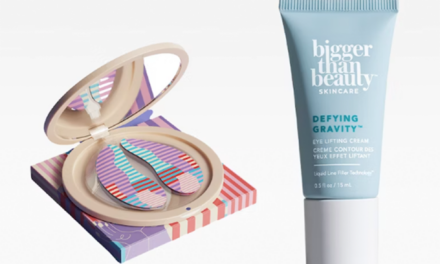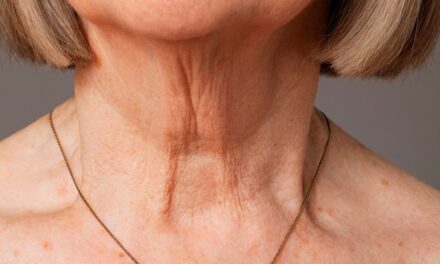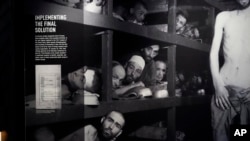Art
Courtney Tenz
Jul 17, 2023 10:42AM
Still from “Barbie,” 2023. © 2023 Warner Bros. Entertainment Inc. All Rights Reserved. Courtesy Warner Bros. Pictures.
Love her or hate her, it’s hard to overstate Barbie’s cultural influence. A childhood favorite for generations, each iteration of the bosomy, blue-eyed, blonde-haired doll is a reflection of its times, often responding to critiques of her fictional personality.
Though her initial appearance was inspired by the German Lilli doll, the character has lived numerous lives since her debut. In one, she was a housewife of disproportionate measurements; in another, she wore a lab coat and the title “Dr.” In other iterations she drove around Malibu in a pink convertible, bought a multi-story dreamhouse, and along the way, gathered friends, a Ken, and a younger sister. All that backstory comes to life in Greta Gerwig’s new film, which embraces the original intention of the doll while also taking aim at critics decrying her anti-feminist message. But how does Gerwig’s unique cinematic aesthetic draw on the artistic and cultural mood of our times?
Advertisement
Without giving away the plot, let’s just say there’s an aura of existential breakdown that matches 2023’s chaotic vibes. The movie seems to evoke the Pop Surrealist worlds that artist Mark Ryden created for his cooperation with Barbie manufacturer Mattel, such as his insect-inspired Barbie Bee (2022). Another doll, known as Pink Pop Barbie Doll (2022), reveals a bizarre new look inspired by the Candy Land game and comes replete with a googly-eyed pet yak. Ryden has also created a line of lithographs that feature a 2D version of the doll en scene, at the center of an ornately decorated town, her pink-hued hair twisted into a beehive.
Ryden’s artworks capture the juxtaposition also present in the Gerwig movie: The doll’s appearance hasn’t changed, but the kitschy atmosphere in which she resides always shifts to accommodate contemporary mood.
Ryden isn’t the only artist to incorporate Barbie into his works. Beau Dunn produces limited edition C-prints featuring variations on the plastic princess in front of pastel backgrounds, her side-eye belying the sophistication of faux pearl earrings and perfect coiffure. The portrait-like prints capture the changes made to Barbie’s style over time—her ruby red lips and thin eyebrows giving way to pearly whites rimmed in pink lip gloss to match the fashions of the decades in which each doll was created. The resulting series not only reflects beauty trends, it foregrounds a broader conversation about the role that Barbie has had in visualizing “the perfect woman.”
In response, artists have used this same language to push back: Catrine Val’s series “FEMINIST” satirizes fashion photography by featuring Barbie-like models in absurdist scenarios, such as FEMINIST Olga (2012), a model in a fedora and stilettos, pictured pushing back a semi-truck.
But the influence of Barbie goes far beyond the artworks she herself appears in. Her influence on art is often felt in critiques of materialist culture more broadly—as in Laurie Simmons’s series anthropomorphizing objects of domesticity, where dolls’ legs turn aspirational middle-class symbols into props for her photographs. Barbie’s brightly hued, idealized version of a domestic, have-it-all lifestyle is often used as shorthand for critiques of consumerist culture: the sports car as a signifier of Barbie’s carefree California lifestyle, or the stiletto heels she adorns portrayed as a trap, as in the work of Tyler Shields’s Handcuff High Heel (2022).
That endless quest for perfection is at the heart of consumer culture, and has inspired works from artists like Sylvie Fleury, whose Bye Bye Dark Circles (Nude) (2023) consists of a fabricated, oversized makeup compact in pastel pink. Fleury frequently critiques capitalist modern ideas of femininity through mundane objects, as seen in her “Chanel Yeti Boots” print series (2019), featuring lithographs of furry boots on denim. A Pop gesture to the transparent superficiality of consumer culture, the series replicates the outline of these unremarkable objects to reflect on the recycling of fashion and our endless desire for material goods.
Color, too, can draw a connection between artists and the doll, whose characteristic shade is a symbol of hyperfemininity, her world (especially as portrayed by Gerwig) a fuschia fever dream that feels like it should be trademarked. Advertisements for the film played on this reputation by printing a whole billboard with the famous shade, with no other text beyond the film’s release date.
Artists have found inspiration in immersing viewers in this powerful color—from light artist James Turrell, who has used the shade in his installations, as well as a brilliant woodcut in his “From Aten Reign” series that allows viewers to get lost in all shades of pink, to Sadie Barnette’s glittery, high-shine sculptures and photographs that heavily draw on the shade. Meanwhile, for her work Skin Pool (Oromom) (2019), Swiss artist Pamela Rosenkranz filled an entire swimming pool at the Okayama Art Summit with silicon tinted a pale, caucasian skin–inspired hue.
Yet despite rumors of a pink paint shortage due to the set design, Gerwig’s movie goes beyond color in creating its unique aesthetic. In an interview with Architectural Digest, the director, along with production designers Sarah Greenwood and set decorator Kate Spencer, said that their inspiration for the movie’s dreamhouse came from the mid-century Palm Springs aesthetic, in particular the famous Kaufmann House, as photographed by Slim Aarons. With the film’s focus on the turquoise pool waters, the team also appears to draw connections with the works of David Hockney, though Gerwig herself said she found inspiration in the soft domestic pastels of Wayne Thiebaud’s pie paintings.
It’s kitschy, this eclectic mix of domesticity and glamour that Barbie embodies. Perhaps that’s why even today, nearly 70 years after the initial release of the Barbie doll, her image is impossible to ignore when interpreting the performance of femininity in artists’ works. We sense her in the background of Martine Gutierrez’s Suits (2014), which scrutinizes the demands on women’s bodies, by placing the transgender artist’s own body in a lineup of mannequins turned away from the camera. The futuristically domestic geometries and pastel pink of Tai Shani’s Turner Prize–nominated exhibition “DC: Semiramis” (2019) also gesture to her outsized impact. Even Jeff Koons’s mammoth Seated Ballerina, installed outside the Rockefeller Center in 2017, seems to project the energy of this famous doll, its blonde ponytail and neat features creating warped reflections, a metaphor for the viewer’s own ideas of femininity.
Jeff Koons, Seated Ballerina, 2017. Photo by Tom Powell. Courtesy of Art Production Fund.
While viewing contemporary art through the Barbie lens can uncover thematic similarities, intentional or not, there’s little doubt that the plastic doll made famous for its unique moving parts has inspired generations of artists. Similarly, Gerwig’s movie will open the door for a further examination of Barbie’s greater meaning and the toy’s relationship to American culture in the 21st century.
Browse available works in the collection “Barbiecore and Hyper-Femininity in Contemporary Art.”
Courtney Tenz




